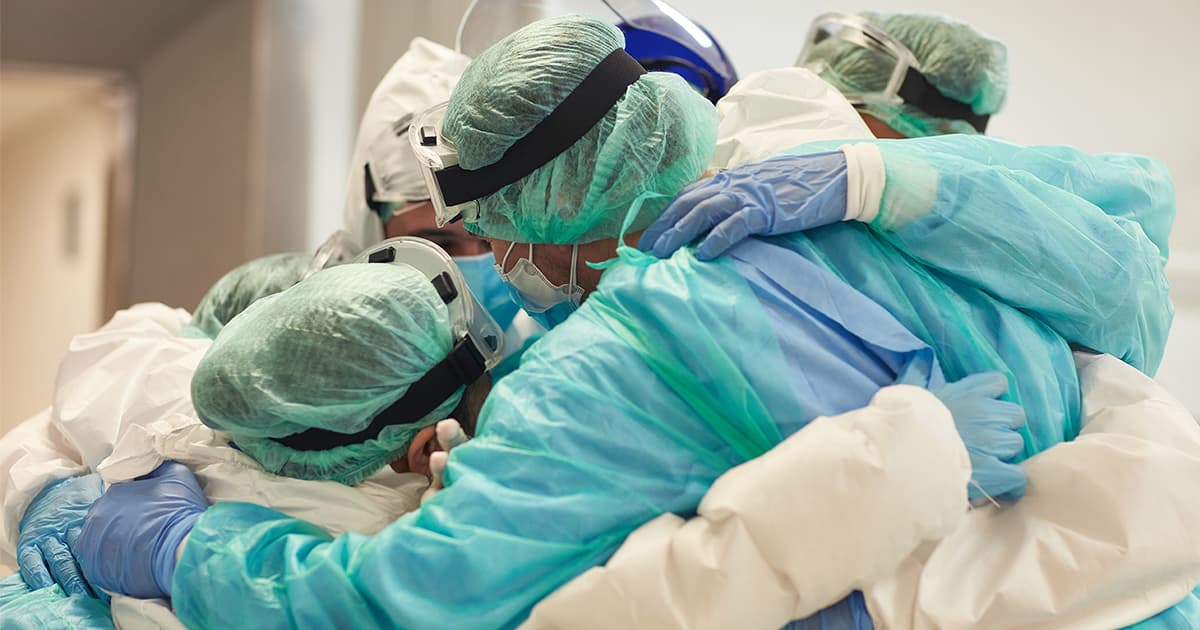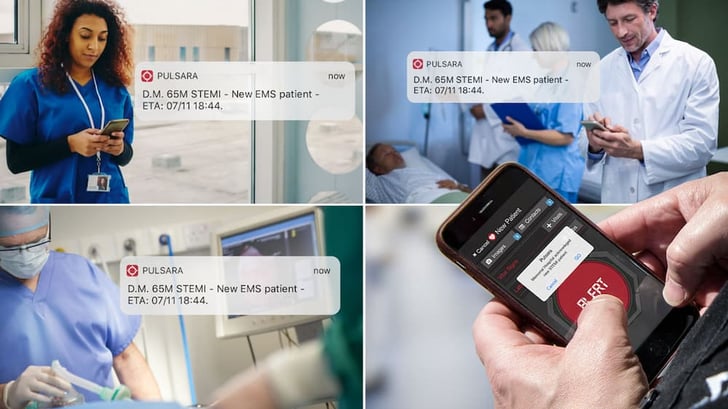Does Your Team Feel Unseen? Close the Leadership Disconnect with 2-Way Communication
Editor's Note: In July 2025, EMS1 and Fitch & Associates released their annual EMS trend survey, What Paramedics Want, proudly sponsored by Pulsara....
3 min read
 Hannah Ostrem
:
Aug 06, 2021
Hannah Ostrem
:
Aug 06, 2021

It's difficult to have a healthy team dynamic without good communication.
But in healthcare, a positive team dynamic isn't the only thing depending on good communication. One retrospective analysis found that communication and teamwork issues were among the most frequent contributing factors to incident reports and adverse events. In fact, one report in the analysis showed that 30% of all surgical procedures included a communication failure. On top of that, 36% of those failures caused delays in treatment time, errors in the surgical procedure, or tension among the care team.
For patients, that's a significant impact on the quality of their care experience. Delays and errors can mean complications, a longer stay in the hospital, and an even longer road to healing.
The cost of miscommunication also affects the various members of the care team. The levels of communication among a care team directly impact team members' mental health and relationship to their organization. As the study above noted, "Perceptions of teamwork and leadership behavior were found to be associated with employee outcomes such as emotional exhaustion, burnout, job satisfaction, and organizational commitment."

This is especially true when it comes down to different perceptions of how well a team is communicating to begin with. As it turns out, members of the same care team sometimes have very different perceptions of the quality of their team's communication. One study showed that nurses rated the quality of communication and collaboration with physicians as just 33% positive—yet those same physicians rated communication and collaboration with nurses as 74% positive. A similar study attributed the issues to different communication values, uncertainty about expectations, and different power dynamics.
But if team members have wildly different perceptions of the quality of communication with their own team, how can they be on the same page about what's going on with their patients?
This lack of alignment has a large impact on care teams. When team members are not on the same page, they may not feel valued or heard, which can also lead to a decrease in job satisfaction, a higher risk of burnout, and a lack of organizational commitment.
All of these factors play into how well clinicians are able to perform their jobs, which has a direct impact on patient care. And as noted in the conclusion of the retrospective analysis: "Healthcare providers do not seem to fully appreciate the impact of psychological factors on clinical performance and that improved teamwork may contribute to increased staff well‐being as well as improved patient outcome."

It's no secret that there is a communication crisis in healthcare. Medical errors secondary to miscommunication are the third leading cause of death in the United States.
Hospitals are ultimately responsible for overall patient safety and outcomes, yet the patient’s care team is often comprised of team members that don’t work for your facility. So how are you supposed to get all those people from all those different facilities on the same page, communicating effectively, and feeling like a truly unified team?
If you're interested in improving teamwork and communication with your team, you'll first have to make sure that you have the right tools that enable the kind of in-depth communication you need.
It's time to replace archaic technologies that force clinicians to waste time repeating the same story, again and again, each time a new member of the care team needs to understand what's happening. Everyone needs to have the same information at the same time, collected, organized, and easily viewable in the same place.
Pulsara can help.

Pulsara is a communication platform that leverages mobile technology to enable clinicians to create a dedicated communication channel around each patient, securely share patient information, and improve the quality of communication around the patient’s needs.
What makes Pulsara unique is its ability to enable dynamic networked communications for any patient event. With Pulsara, clinicians can add a new organization, team, or individual to any encounter, dynamically building a care team even as the patient condition and location are constantly evolving. Studies report that Pulsara helps decrease treatment times by an average of 30%.
If you’re interested in improving communication between your care teams, mitigating communication and clinical errors, reducing patients’ length of stay, and ultimately improving the care experience for your patients, learn more about what Pulsara can do for you.
Editor's Note: This post was originally published in July 2018 and has been updated for accuracy and comprehensiveness.
![]()
Over the last few years, a group of leading clinicians in Victoria, Australia have transformed their team communication with cutting-edge technology, successfully reducing treatment times, building relationships between their care teams, and improving patient care. This is their story.

Editor's Note: In July 2025, EMS1 and Fitch & Associates released their annual EMS trend survey, What Paramedics Want, proudly sponsored by Pulsara....
![[PRESS RELEASE] Published Research Finds Up to 31% Faster STEMI Treatment Times in Rural Hospital Setting with Pulsara](https://www.pulsara.com/hubfs/_1_website-page-blog-assets/pulsara-hosp-teams-assign-cardio-stemi-rn-1200x701.jpg)
Published research shows how using Pulsara, alongside standardized field activation and a focus on stakeholder relationships, improves STEMI care and...

Editor's Note: In July 2025, EMS1 and Fitch & Associates released their annual EMS trend survey, What Paramedics Want, proudly sponsored by Pulsara....